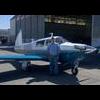Detonation problems from junk on spark plug
-
Members Online
- T. Peterson
- redbaron1982
- joepilotmooney
- ohdub
- PT20J
- Marc_B
- eman1200
- EricJ
- ragedracer1977
- Shawn26
- Stubby
- NickG
- Schllc
- 1967 427
- 1980Mooney
- jeremyc209
- glbtrottr
- 201er
- WilliamR
- 65MooneyPilot
- A64Pilot
- Beechbum
- BrentS
- haymak3r
- JustusSJ
- Tester22
- Greg Ellis
- Parker_Woodruff
- UteM20F
- Fasterthanmycherokee
- Rmfriday
- Scottknoll
- M20S Driver
- TCC
- Marahute
- Keith Bake
- AndreiC
- Rusty Pilot
- pitpalacul
- Paul Thomas


Recommended Posts
Join the conversation
You can post now and register later. If you have an account, sign in now to post with your account.